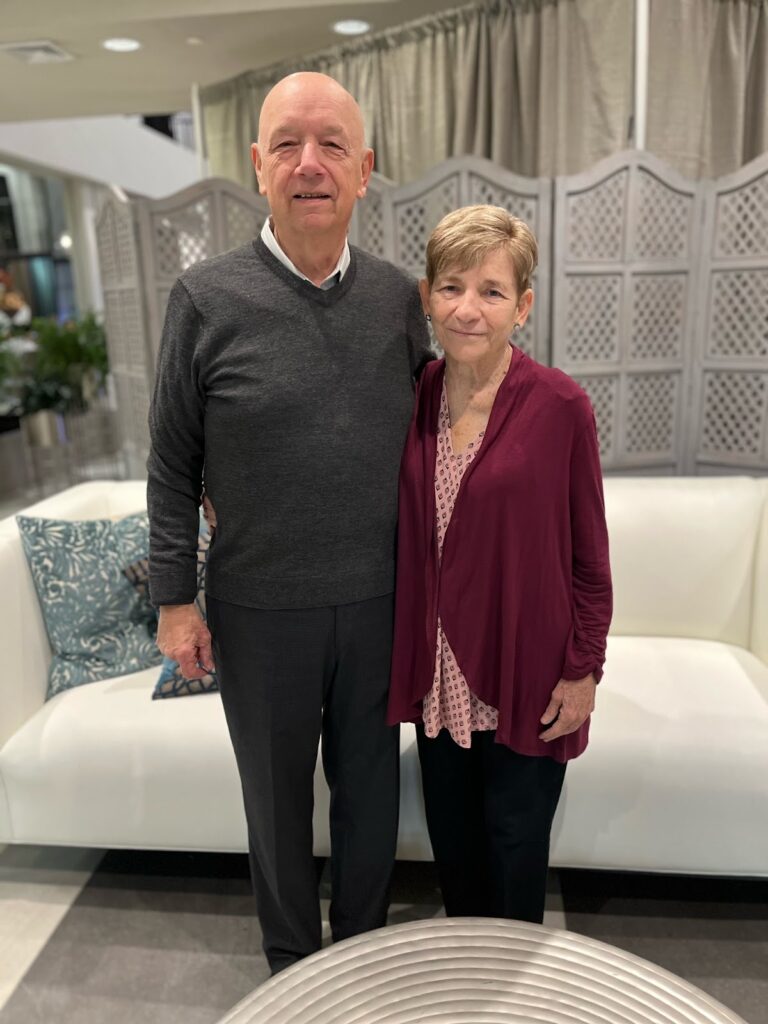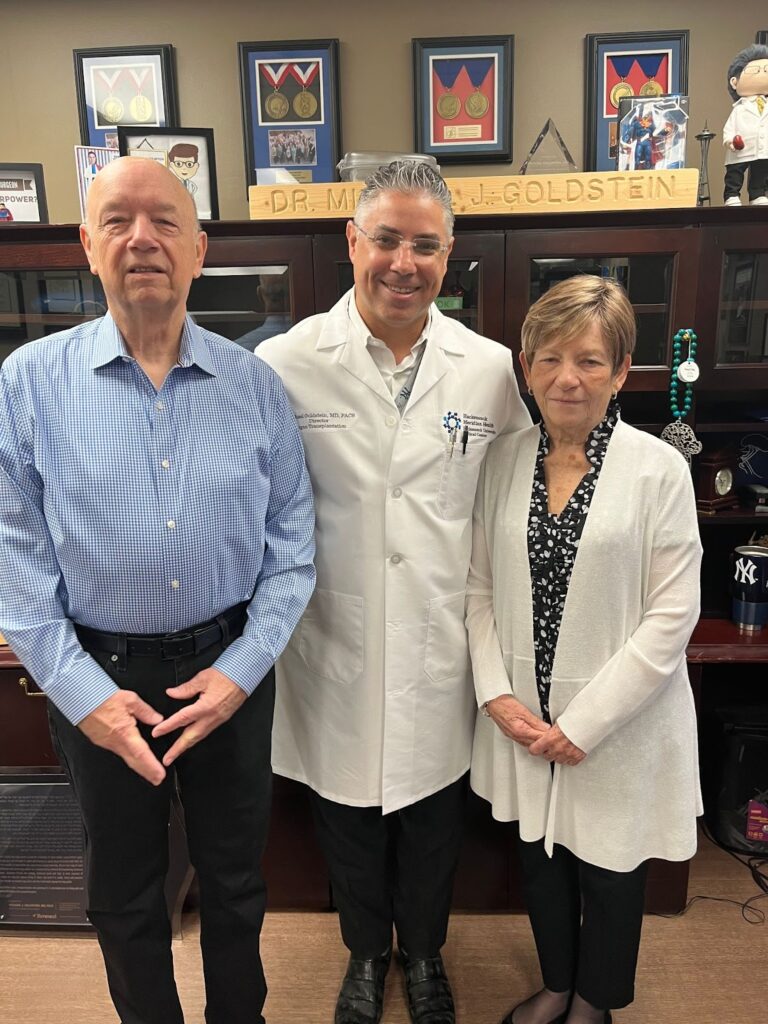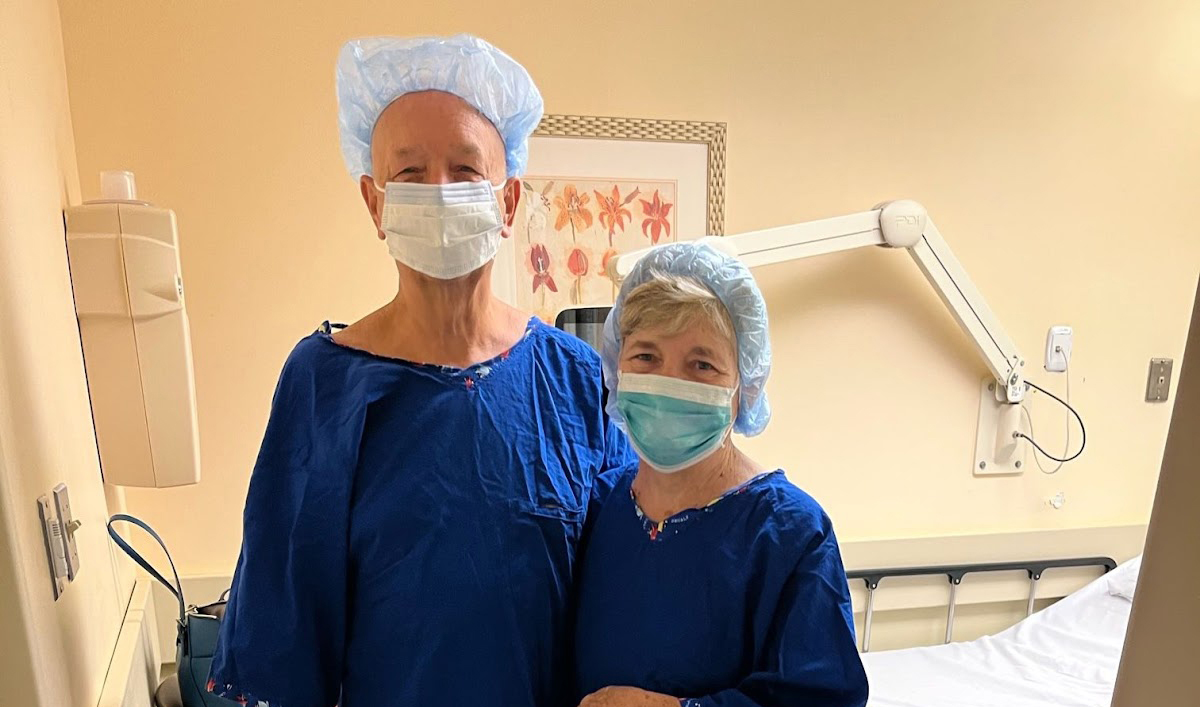After more than 50 years together, Ellen and Dave Haug would do almost anything for each other, including giving up one of their organs.
“Of course I was willing to donate one of my kidneys to my wife to improve her quality of life and ultimately save it,” said Dave, who was luckily biologically compatible with Ellen.

But Ellen’s case was a complicated one. Her kidney disease was the result of multiple health problems that claimed her bladder at birth making it difficult to find doctors willing to perform such a complex procedure.
“We found a hospital to do it and were all set but then we were told the transplant wouldn’t happen because the doctors found that Dave had a small stone in one of his kidneys,” said Ellen, who was deeply disappointed. “I knew that meant I would have to start dialysis while waiting and hoping for another kidney donation.”
With more than 100,000 people currently on the national kidney waiting list and only about 17,000 people receiving one each year, the couple felt hopeless. “But then it was recommended that we go to Hackensack University Medical Center, just miles from our home, and speak with Dr. Michael Goldstein.”
Hackensack University Medical Center’s Kidney Transplant Program is among the fastest-growing and largest in the nation. Dr. Goldstein, the Director of Abdominal Organ Transplantation, says he and his team innovate to maximize utilization of donor organs to dramatically reduce waiting times for a lifesaving kidney transplant.

“Ellen’s case was one of the most surgically complicated that I have encountered in my more than 20 year career in organ transplantation,” explained Dr. Goldstein. She was born without a functioning urinary bladder mandating urologic surgeons to find an alternate reservoir for her urine production. She underwent numerous complicated operations finally resulting in the use of part of her colon as a neobladder, called an Indiana pouch. After decades of use to drain the urine from her one remaining kidney, both the pouch and the left kidney were very unhealthy. “Designing and orchestrating a living donor transplant to function in her was a formidable challenge, the greatest of my career. After x-rays and CT scans to map out Ellen’s complex anatomy, and many days and nights manifesting the procedure, I had the ideal solution and plan to help her, “ says Dr. Goldstein.
Dave, as a living donor, was also complex due to the presence of a kidney stone in his right kidney. Despite his advanced age, he was in great health to become a living donor for Ellen. “Dave was an expanded-criteria, live donor who despite having a kidney stone demonstrated a low propensity for stone recurrence,” says Dr. David Serur, Medical Director of kidney transplantation. Despite the uncertainty of the outcome, Dave had zero hesitation. Dr. Serur explains, “Our living donor program aims to minimize risk to the donor while maximizing the opportunity to support the donor’s wishes to achieve the emotional benefits of giving the gift of life.”
In the Haug’s case, the transplant team, including Dr. David Serur and surgeon, Dr. Samuel Sultan, who worked closely with Ellen’s urologist, Dr. Gregory Lovallo, wasn’t going to let that kidney stone get in the way of true love. “We were safely able to remove the donor kidney and the stone and proceed with the transplant,” said Dave’s surgeon, Dr. Sultan. After Dave’s right kidney was removed, Dr. Goldstein and colleagues were able to retrieve the kidney stone using a ureteroscope while the kidney was being preserved on ice.
Dr. Goldstein was then able to transplant the kidney into Ellen. After the heroic 8-hour procedure, Ellen was reunited with her husband in recovery. “It went so smoothly, we were up and walking within the first few hours.”
“Prior to the surgery, we were running out of options”, said Dave. “Now, it’s like we have a new lease on life and we’re able to breathe again.” The couple, who have four adult children and have been looking forward to spending more time with them and their grandchildren, say they are so grateful to the entire Transplant Team for agreeing to take on her complicated case when no one else would. “They are a smart, compassionate group, from intake to post-op, and we could not be more appreciative,” said Ellen who shared that while she was still in the hospital recovering from the surgery, Dr. Goldstein would call Dave every evening on his way home from work, just to give him an update on her progress and say hi. “What an amazing experience and now, we feel great and we’re so happy, this has made all the difference in our lives.”
This Donate Life Month, Ellen and Dave hope their story serves as a symbol of hope to patients waiting for a life-saving transplant and encourage everyone to consider living donation through the National Kidney Registry or registering to be a deceased organ, eye, and tissue donor, because by doing so today, you will someday leave behind the gift of life.
“I’m so lucky to have Dave, we’ve shared an incredible life together and will continue to do so because of his gift to me, I hope others may find it in their hearts to do the same.”














